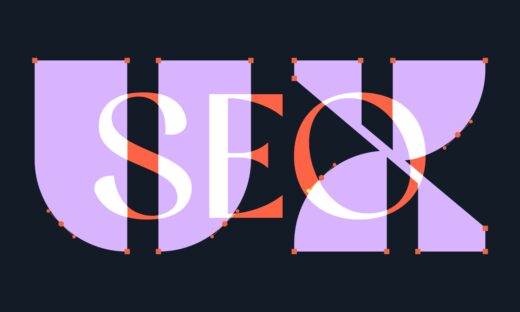How to please humans and search engines with SXO
3 min read

Or should I say… how to please the UX designers and SEO experts? ;p
Search Experience Optimisation (SXO) combines SEO techniques with UX best practices to create websites that help you attract visitors, keep them engaged, and convert them into customers.
SXO is ultimately about optimising for both humans and search engines!
Sometimes this can be a joyous union of SEO and UX where the stars align and a beautiful meteor shower rains down.
But…
There are also occasions where these optimisations are not so straightforward. The elbows come out and some jostling must take place to uncover the sweet spot where both UX and SEO prevail.
Where SEO and UX are a match made in heaven
Some optimisations benefit both search engines and humans:
Clear and Intuitive Navigation
UX benefit: Logical and intuitive navigation helps users find the information they need quickly and effortlessly.
SEO impact: Clear navigation improves crawlability and content understanding, ensuring search engines can easily index your pages, knowing when and where to serve them.
Clear Call-to-Actions (CTAs)
UX benefit: Well-designed CTAs help users understand the next steps, making it easier for them to engage with your site and achieve their goals.
SEO impact: Effective CTAs can increase user engagement and conversions, which signals to search engines that your site provides valuable content, potentially boosting rankings.
Interlinking
UX benefit: By linking related pages internally, users can easily explore relevant content without getting lost. This enhances the user experience by providing a logical content journey.
SEO impact: Interlinking can dramatically boost SEO by distributing page authority throughout your site, helping search engines to find related content and prevent orphan pages.
Breadcrumbs
UX benefit: Breadcrumbs help users understand their location within a site’s hierarchy, allowing them to navigate easily. This visual aid reduces friction by helping users backtrack seamlessly.
SEO impact: Breadcrumbs provide search engines with a clearer understanding of the website’s structure, which can help improve rankings and serve pages as rich results.
When SEO and UX are a balancing act
Despite the overlap, some SEO practices can create challenges for UX (and vice versa) requiring careful prioritisation and compromise.
Page Load Speed vs. Rich Content
Rich content, such as high-resolution images, videos, and interactive features, can significantly improve UX but often slow down page load times. This is particularly tricky because page speed is crucial for SEO rankings. Solutions like lazy loading and image optimisation can help balance the need for an engaging experience with the need for speed.
Content Length vs. User Attention
Longer pages with comprehensive content can better meet user intent and rank better as a result. However, we know that readers often prefer content that is concise, scannable, and easy to digest. Breaking down long content pages into bullet points, summaries, or collapsible sections can help maintain scannability, and at the same time appeal to search engine’s rich snippets and AI overviews.
Keyword Language vs. Brand Tone of Voice
SEO practice has (thankfully) evolved to not just stuff keywords into headings and navigation labels. Instead, using ‘actual’ search queries in your language will more closely match user intent and aid usability. While this is vital for connecting with your audience, it doesn’t always align with your brand’s personality. If you’re lucky you can strike a balance for both. But oftentimes, this is where compromise is needed, collaborating closely with your stakeholders to ensure you're speaking their audience’s language while staying true to their brand identity.
SXO reigns. Long live SXO.
In the end, the intersection of SEO and UX strengthens both fields.
SXO helps search engines understand and rank your site effectively while providing users with a seamless and engaging experience.
In that regard, SXO is a people pleaser and a search engine pleaser. Balancing these elements can lead to higher search rankings, increased traffic, and better user satisfaction. Not forgetting those all important conversions!

Lucy Williams
A Principal UX and Digital Designer with almost two decades of experience. She loves balancing UX thinking with digital creativity to design innovative & vibrant products.
She has specialist knowledge in digital brands and sustainability.
Connect on LinkedIn.
How SEO has made me a better UX designer
5 min read

SXO for reaching modern audiences and search engines
5.5 min read
